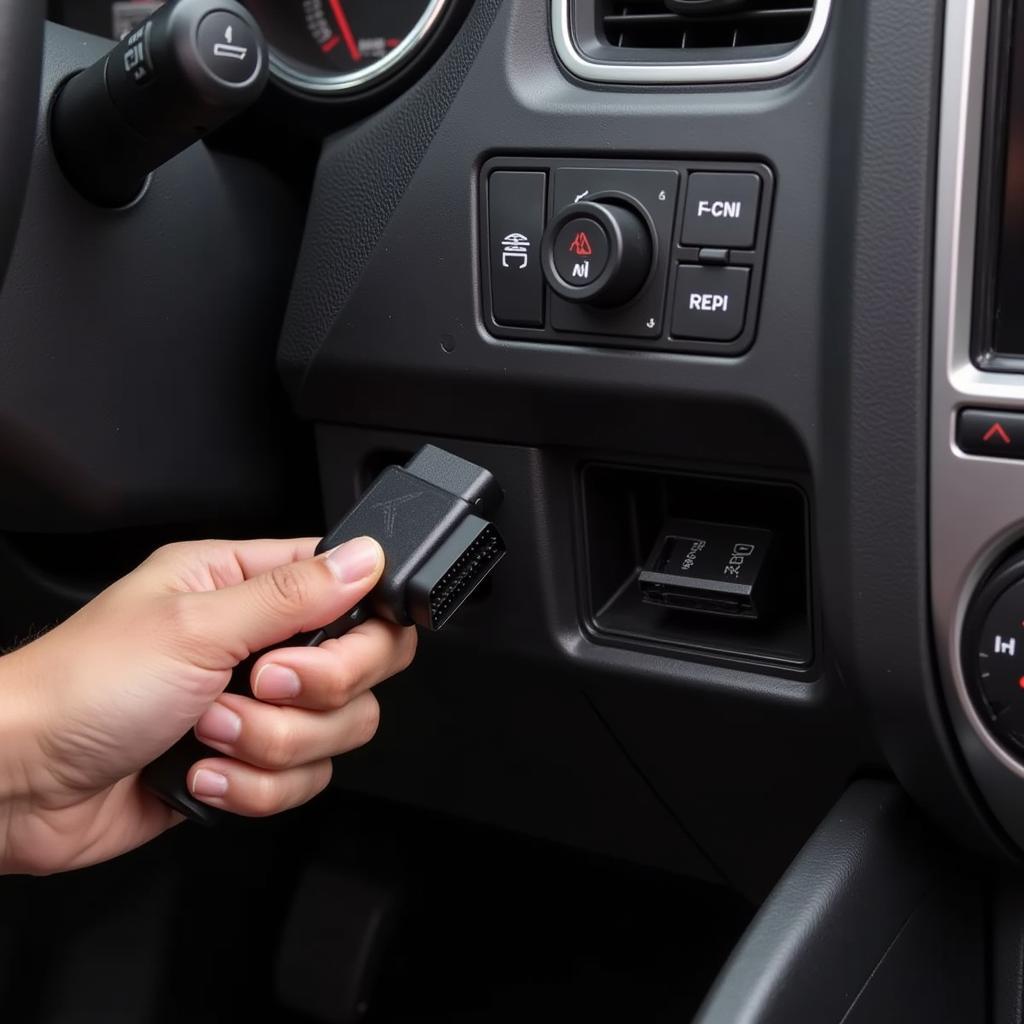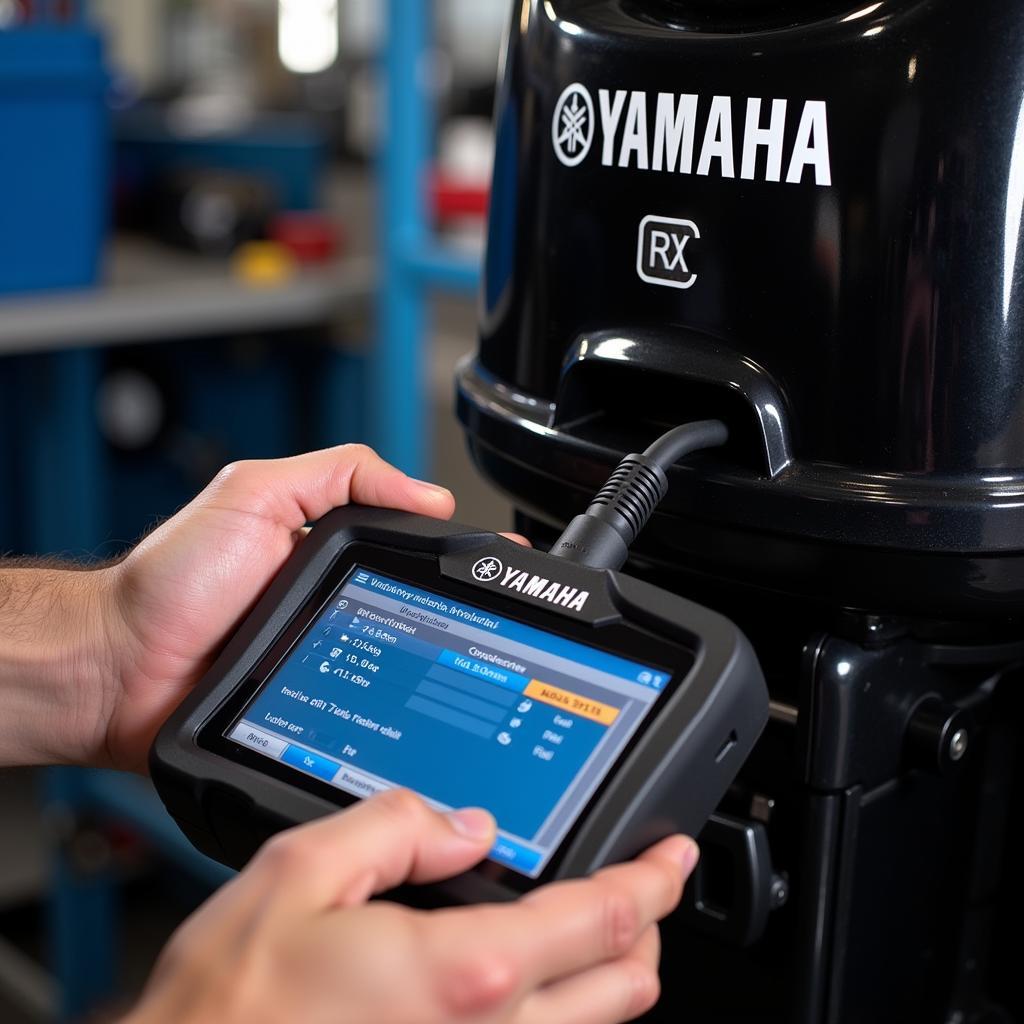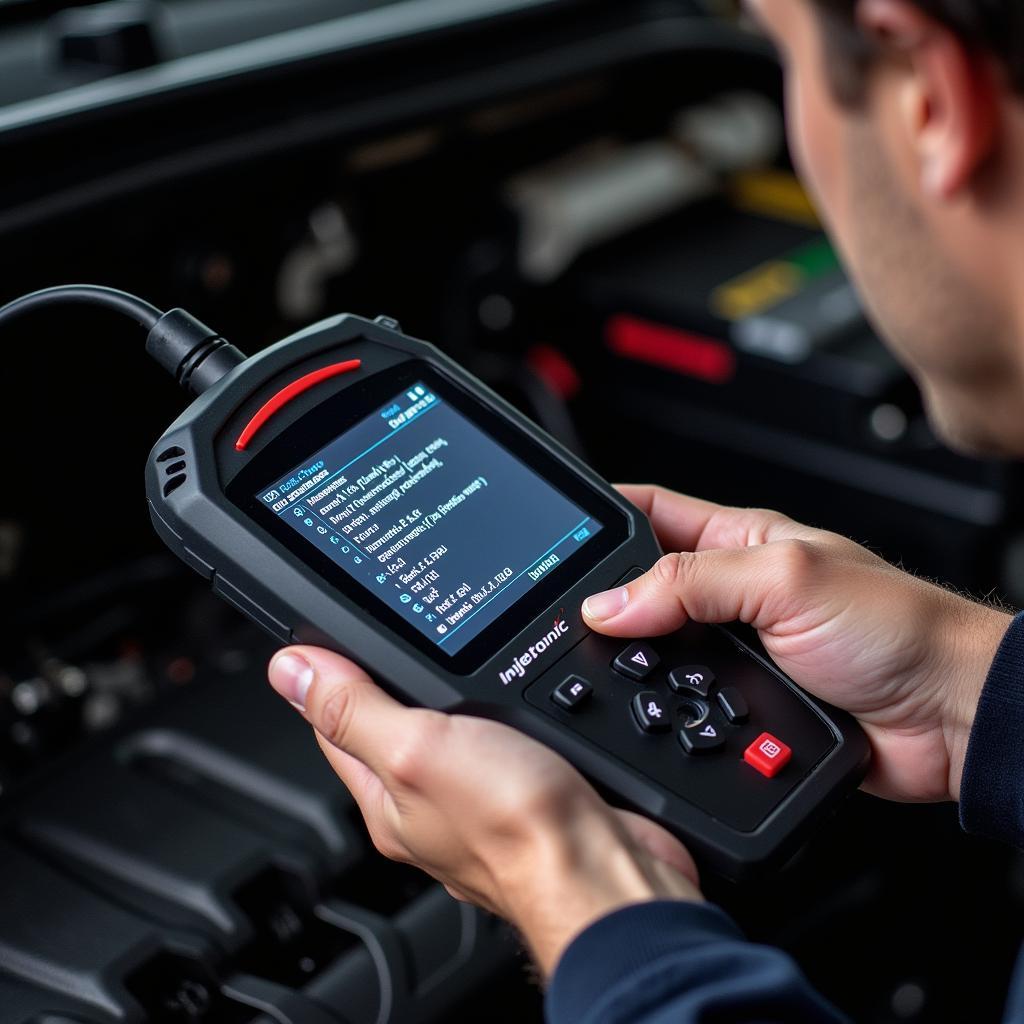Mitsubishi vehicles are known for their reliability and performance, but even the most well-maintained car can experience issues. That’s where Mitsubishi Obd2 Scan Tools come in. These handy devices connect to your vehicle’s onboard computer and provide valuable information about any problems that might be occurring.
This comprehensive guide will dive deep into the world of Mitsubishi OBD2 scan tools, equipping you with the knowledge you need to diagnose and potentially fix issues yourself. Whether you’re a seasoned mechanic or a car enthusiast looking to gain a deeper understanding of your Mitsubishi, this guide is for you.
Understanding OBD2 and Your Mitsubishi
Before we explore the specifics of scan tools, let’s clarify what OBD2 is and how it works within your Mitsubishi. OBD2, short for On-Board Diagnostics, is a standardized system that allows external devices to access your car’s computer system. This system provides valuable data about your engine, transmission, emissions, and various other components.
 Mitsubishi OBD2 Port Location
Mitsubishi OBD2 Port Location
When your Mitsubishi’s Check Engine Light illuminates, it indicates a potential problem that the OBD2 system has detected. By connecting a scan tool, you can read the diagnostic trouble codes (DTCs) stored in the car’s computer, giving you insight into the issue’s nature.
Why Use Mitsubishi OBD2 Scan Tools?
Using a Mitsubishi OBD2 scan tool offers numerous benefits, including:
- Early Problem Detection: Identify minor issues before they escalate into major (and costly) repairs.
- Accurate Diagnostics: Get precise information about the source of problems, eliminating guesswork and unnecessary repairs.
- Cost Savings: By understanding the problem, you can avoid unnecessary trips to the mechanic or potentially fix some issues yourself.
- Enhanced Vehicle Knowledge: Gain a deeper understanding of how your Mitsubishi operates and identify potential maintenance needs.
Types of Mitsubishi OBD2 Scan Tools
Mitsubishi OBD2 scan tools come in various forms, each with its features and price point. Let’s explore the most common types:
1. Basic Code Readers:
- Features: These affordable devices can read and clear basic DTCs.
- Best for: Car owners who want a simple tool to understand Check Engine Light warnings.
2. Advanced Scan Tools:
- Features: Offer more detailed diagnostic information, including live data streams, sensor readings, and the ability to perform some advanced functions like ABS bleeding.
- Best for: DIY enthusiasts and small workshop owners who want to diagnose and address a wider range of issues.
3. Professional-Grade Scanners:
- Features: The most comprehensive and expensive option, offering dealership-level functionality, including module coding, programming, and access to manufacturer-specific data.
- Best for: Professional mechanics and dealerships requiring the most advanced diagnostic capabilities.
Choosing the Right Mitsubishi OBD2 Scan Tool
Selecting the appropriate scan tool depends on your budget, technical skills, and the level of diagnostic detail you desire.
Consider these factors:
- Vehicle Compatibility: Ensure the scan tool is compatible with your specific Mitsubishi model and year.
- Features: Determine which features align with your needs and expertise.
- User Friendliness: Opt for a tool with an intuitive interface and easy-to-understand instructions.
- Budget: Set a budget range that aligns with the features and functionality you require.
How to Use a Mitsubishi OBD2 Scan Tool
Using a Mitsubishi OBD2 scan tool is generally straightforward. Here’s a step-by-step guide:
- Locate the OBD2 Port: Usually found under the dashboard on the driver’s side.
- Connect the Scan Tool: Insert the scan tool’s connector into the OBD2 port.
- Turn the Ignition On: Turn the key to the “on” position without starting the engine.
- Read the Codes: Follow the scan tool’s instructions to read the stored DTCs.
- Interpret the Codes: Use a reliable source to decipher the meaning of the codes and understand the potential problem areas.
- Clear the Codes: After addressing the issue, use the scan tool to clear the DTCs.
Common Mitsubishi OBD2 Codes
While numerous DTCs can appear, certain codes are more common in Mitsubishi vehicles. Here are a few examples:
- P0420: Catalyst System Efficiency Below Threshold (Bank 1) – Often indicates a failing catalytic converter.
- P0171: System Too Lean (Bank 1) – Points to a potential issue with the air/fuel mixture.
- P0300: Random/Multiple Cylinder Misfire Detected – Can be caused by faulty spark plugs, ignition coils, or other engine-related problems.
Remember, this is not an exhaustive list, and a proper diagnosis involves considering the specific code, vehicle history, and other potential symptoms.
Beyond Diagnostics: Advanced Features
Many advanced and professional-grade Mitsubishi OBD2 scan tools offer features that go beyond basic code reading and clearing. These include:
- Live Data Stream: View real-time sensor readings, providing insights into engine performance, emissions data, and other critical parameters.
- Freeze Frame Data: Access a snapshot of the engine’s operating conditions at the time a DTC was set, aiding in problem identification.
- Component Testing: Perform tests on specific components, like actuators or solenoids, to verify their functionality.
“Understanding the data provided by your scan tool can help you make informed decisions about your Mitsubishi’s maintenance and repair,” says John Davis, a senior automotive technician with over 20 years of experience.
Mitsubishi OBD2 Scan Tools: Essential for Every Owner
Mitsubishi OBD2 scan tools have evolved from specialized equipment used solely by mechanics to accessible and valuable tools for every car owner. By investing in the right scan tool, you can empower yourself to diagnose issues accurately, potentially saving time and money on repairs. Whether you’re troubleshooting a Check Engine Light or seeking a deeper understanding of your Mitsubishi’s performance, these tools provide a direct line to your vehicle’s inner workings.
Still, have questions about choosing the right Mitsubishi OBD2 Scan Tool? Don’t hesitate to contact the experts at ScanToolUS. We’re here to help you find the perfect tool for your needs.
Contact ScanToolUS:
Phone: +1 (641) 206-8880
Office: 1615 S Laramie Ave, Cicero, IL 60804, USA
FAQs about Mitsubishi OBD2 Scan Tools:
-
Can I use any OBD2 scan tool on my Mitsubishi?
While most OBD2 scan tools can read generic codes on Mitsubishi vehicles, investing in a scan tool specifically designed for Mitsubishi will provide more comprehensive diagnostic information and access to manufacturer-specific codes.
-
Will using an OBD2 scan tool void my Mitsubishi’s warranty?
No, using an OBD2 scan tool will not void your vehicle’s warranty. In fact, it can be a helpful tool for identifying potential issues covered under warranty.
-
What should I do if my scan tool can’t connect to my Mitsubishi?
First, ensure the scan tool is compatible with your specific Mitsubishi model and year. Check that the ignition is turned to the “on” position and that the OBD2 connector is securely inserted into the port. If issues persist, consult the scan tool’s manual or contact the manufacturer for support.
-
Do I need a professional-grade scan tool for basic maintenance tasks?
Not necessarily. Basic code readers are sufficient for simple tasks like reading and clearing Check Engine Light codes. However, if you plan to perform more advanced diagnostics or repairs, an advanced or professional-grade tool might be more suitable.
-
Can an OBD2 scan tool program a new key for my Mitsubishi?
Programming new keys often requires specialized equipment and software. While some professional-grade OBD2 scan tools might offer this functionality, it’s best to consult your Mitsubishi dealership or a qualified locksmith for key programming services.
We hope this comprehensive guide has been helpful. Happy driving!


